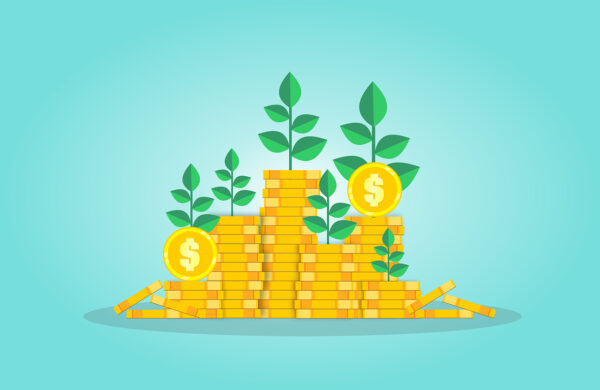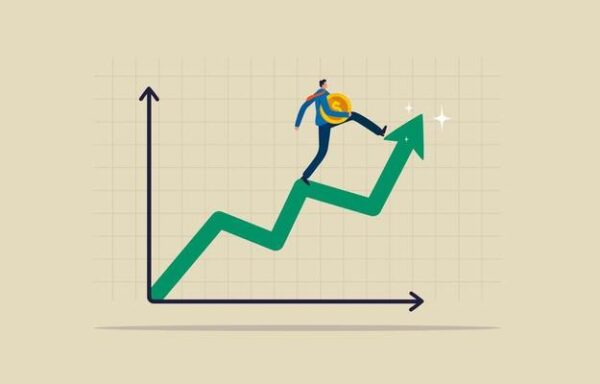Diving into the complex world of investing, we’ve gathered insights from top financial experts, including CEOs and founders, to spotlight the nuances between value and growth investing strategies. From the criteria used in stock selection to the investor focus on intrinsic value versus expansion, explore the diverse perspectives in these 10 comprehensive responses.
STOCK SELECTION CRITERIA AND EXPECTATIONS
One significant difference between value and growth investing strategies lies in the criteria used to select stocks and the expectations about the companies’ future performance.
Value Investing: This strategy involves looking for stocks that appear to be trading for less than their intrinsic or book value. Value investors search for companies that are undervalued by the market, often due to temporary issues or market overreactions. These investors believe the market will eventually recognize the true value of these companies and adjust the stock price accordingly. They rely on fundamental indicators like a low price-to-earnings (P/E) ratio, high-dividend yields, and a strong balance sheet. The approach is generally more conservative and focuses on long-term profitability and stability.
Growth Investing: In contrast, growth investing focuses on companies that exhibit signs of above-average growth, even if the stock price appears expensive in terms of metrics like P/E ratio. Growth investors are primarily attracted to companies that are expected to increase their profits at an above-average rate compared to their industry or the overall market, regardless of the current price. This strategy is often associated with investing in technology or new industries where there is potential for significant disruption and rapid growth. The risk level can be higher, but the potential for substantial returns is also greater if the companies achieve their expected growth.
Thus, the core difference is that value investing seeks out underpriced, overlooked stocks with strong fundamentals, while growth investing targets companies with strong potential for earnings growth, regardless of their current valuation.
Hardik Parikh, Principal Consultant, Invest Book Shelf

TREASURE HUNTING VS. CHASING STARS
In web design, understanding user intent is essential. It’s similar with investing. Value investors, like treasure hunters, seek undervalued, established companies. They believe the price will rise to reflect the company’s worth, aiming for a long-term payoff.
Growth investors target companies with high future potential, even if expensive now. They chase rising stars, hoping to capitalize on short-term growth. So, value investors find hidden gems, while growth investors chase potential.
Juan Carlos Munoz, Co-founder, CC Creative Design
COMPARING UNDERPRICED AND FUTURE GROWTH
A significant difference between value and growth investing is their focus. Value investing looks for underpriced opportunities that others might overlook, much like finding a piece of land priced below its potential market value at Land Boss.
Growth investing, on the other hand, seeks companies with potential for significant future growth, similar to investing in areas expected to develop rapidly. Each strategy has its merits, but my approach leans toward the security of value investing, ensuring a margin of safety.
Bart Waldon, Co-founder, Land Boss

RISK AND TIMING IN INVESTMENT APPROACHES
In my extensive career as CEO of BlueSky Wealth Advisors and through hosting my program All Things Money With David Blain, I’ve had a profound involvement in both value and growth investing strategies. Here’s a nuanced insight based on that experience: Value investing focuses on companies that appear underpriced compared to their intrinsic value, often characterized by lower P/E ratios and potentially high-dividend yields. A quintessential example from my professional practice involved advising on the automotive sector during the 2009 financial crisis. Companies like Ford, which didn’t take bailout money yet was hit by declining sales and had to slash dividends, represented typical value investments. It was out of favor but possessed the potential for substantial returns due to the market’s undervaluation.
Conversely, growth investing targets companies expected to grow earnings significantly above the market average. These companies usually reinvest their earnings back into the business rather than paying dividends. Apple’s example is pertinent here. Last summer, it became the largest company by market capitalization, reflecting typical growth investment characteristics. Though such stocks are often pricier and assume continued growth, they present risks, as global market share (global GDP) limitations can inhibit sustained growth rates.
The primary difference, from my vantage point, lies in the approach to risk and timing. Value investing often requires patience and a contrarian view, betting on stock revival based on fundamentals. Growth investing, while potentially more lucrative, often demands a higher risk tolerance and hinges heavily on timing and market sentiment. Hence, understanding one’s risk capacity and crafting strategies that align with personal or organizational financial goals is paramount, a principle that I consistently apply in setting investment strategies at BlueSky.
David Blain, CFA, Chief Executive Officer, BlueSky Wealth Advisors

LOOKING AT CURRENT VALUE AND FUTURE POTENTIAL
One major difference between value and growth investing strategies is their investment selection approach. Value investing identifies undervalued stocks trading below their intrinsic value, often characterized by low P/E ratios or other similar metrics. Investors employing this strategy seek bargains, aiming to buy stocks at a discount and profit when their true worth increases in the market.
Conversely, growth investing prioritizes companies with strong potential for future growth, usually characterized by high earnings growth rates and expanding market opportunities. Growth investors are more willing to pay a premium for company stocks poised for substantial growth, betting on their ability to deliver superior returns over time. While value investing emphasizes current value and financial stability, growth investing focuses on future potential and innovation, reflecting distinct philosophies in investment decision-making.
Daniel Kroytor, Founder and Director, Tailored Pay
INVESTOR GOALS AND RISK TOLERANCE
One significant difference between value and growth investing strategies lies in their core approach to selecting stocks. As a co-founder of Rockerbox Tax Solutions and from my experience in financial advisory, I’ve seen firsthand how these strategies impact portfolio composition and investor expectations.
Value investing focuses on stocks that are undervalued in the market, operating under the hypothesis that the market hasn’t fully recognized their true value. Such stocks often have lower P/E ratios and high dividend yields. My experience with financially advising small businesses has shown that value investments can provide stable and predictable returns, as these companies often have long-standing business models tested by economic cycles. For instance, during an advisory session, a client invested in an undervalued manufacturing firm which later restructured and significantly increased in market value.
Conversely, growth investing targets companies expected to grow earnings at an above-average rate compared to their industry or the overall market. These stocks generally don’t pay dividends as profits are reinvested back into the business to fuel further growth. In my role, I’ve observed clients who pursue growth investing benefiting from the exponential rise in tech startups’ valuations, albeit with higher volatility and investment risks. For example, a client invested early in a tech startup focused on AI for financial services, which doubled its value after a breakthrough product launch.
Both strategies have their merits and risks, and the choice often comes down to the investor’s financial goals, risk tolerance, and time horizon.
Philip Wentworth Jr, Co-founder and CEO, Rockerbox Tax Solutions
![]()
PRIORITIZING POTENTIAL OVER PRESENT VALUE
One significant difference between value and growth investing strategies lies in the stocks they prioritize. A growth strategy tends to focus on companies anticipated to surpass the market’s performance in the long run, often emphasizing potential over current value.
On the flip side, value investing focuses on stocks believed to be undervalued in the market at present, with the expectation that their true worth will eventually be recognized. In short, while growth eyes future potential, value scouts for hidden gems in today’s market landscape.
Joe Chappius, Financial Planner, Tax Climate
PRACTICAL INSIGHTS ON INVESTMENT STRATEGIES
From over 40 years of experience in finance, particularly as a tax professional and a former trust officer who has seen numerous financial plans unfold, I can provide a practical perspective on the difference between value and growth investing strategies. During my tenure overseeing trust and estate management, I often collaborated with investors with varied orientations toward growth and value investments.
Value investing typically focuses on securities that appear underpriced relative to their intrinsic value. In practice, this often leads to investing in established companies facing temporary issues but having strong fundamentals. For instance, at U.S. Trust, we managed several portfolios that capitalized on market overreactions, purchasing stocks at prices less than their worth. These decisions often involved deep research and patience but provided stable, long-term gains once the market corrected its initial misconceptions about the company’s value.
On the other hand, growth investing strategies prioritize companies with potential for substantial earnings growth, even if their current valuation seems high. In my role overseeing a tax group and later as a family office executive for a Forbes 400 family, I dealt with portfolios focused on high-growth areas like technology and biotech. These investments often lacked immediate profitability but had high potential for exponential growth. While managing these assets, the main challenges were greater volatility and the necessity of keeping a keen eye on market trends and innovations to ensure timely entry and exit points.
In summary, value investing seeks safety in undervaluation and relies on more traditional assessment methods, while growth investing thrives on potential market disruptors and can command higher speculative premiums. Both strategies depend heavily on the investor’s risk tolerance, market knowledge, and investment timeline, with value investing being generally less volatile and growth investing offering potentially higher, albeit riskier, returns.
John F. Pace, CPA, Tax Partner, Pace CPA
![]()
CONTRASTING COMPANY CHARACTERISTICS AND GROWTH
One significant difference between value and growth investing strategies lies in their approach to stock selection based on company characteristics and future potential. Value investing focuses on finding stocks that appear to be undervalued relative to their intrinsic value, often due to temporary issues.
These companies typically have lower P/E ratios and may offer higher dividend yields, while growth investing targets companies that exhibit potential for above-average earnings growth, even if their current valuation seems high.
These companies might not pay dividends as they reinvest earnings back into the business to fuel further growth. Essentially, value investors seek stocks trading at a discount, while growth investors look for companies with strong future earnings potential.
Rose Jimenez, Chief Finance Officer, Culture.org
DIFFERENCE IN INTRINSIC VALUE VS. EXPANSION
The key difference between value and growth investing lies in the investor’s focus. Value investors aim to find stocks trading below their intrinsic value and buy them at a discount, betting that the market will eventually recognize the company’s true worth. Growth investors, on the other hand, look for companies with strong earnings growth and the potential for high capital appreciation, often paying a premium for shares in anticipation of future growth.
A value investor like Warren Buffett seeks out mature, established companies with stable fundamentals, buying when their stock prices dip. He’ll hold those value stocks patiently, sometimes for decades, waiting for Mr. Market to revalue them higher. A growth investor like Cathie Wood actively seeks emerging innovative companies poised for rapid expansion. She’ll pay higher valuations, betting that those growth stocks will quickly multiply in price as revenues and earnings accelerate.
Gauri Manglik, CEO and Co-founder, Instrumentl
Featured connects subject-matter experts with top publishers to increase their exposure and create quality, ready-to-publish Q&A content.














































